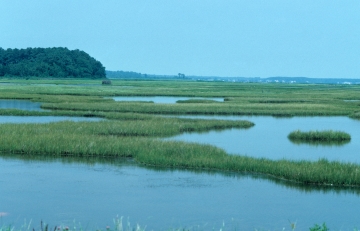700323_Vanishing Marshes360 px width.jpg

Coastal salt marshes are at risk due to rising sea levels and coastal development. Credit: NOAA
Salt marshes are defenders. They protect the coast against erosion and storm surges. They store carbon, which helps limit global warming. And they provide habitat for fish, shellfish, and birds.
Yet the marshes could use their own defenders. They’re disappearing—the result of rising sea level and coastal development. And a recent study says that more than 90 percent of them could disappear by the end of the century.
Researchers studied a marsh system in Massachusetts from the 1970s to 2022. Their goal was to see how the system responded to different levels of nitrogen, which is a key nutrient. They split the marsh into plots, and controlled the nutrients that each plot received. They found that higher levels of nitrogen produced more widespread vegetation.
As changes in climate began to accelerate, though, the scientists also studied how the system responded to warmer temperatures and higher sea levels. They found that, as conditions changed, the species of plants that grew closer to the sea began to overtake the species a little farther inland. They also expanded, increasing the extent of the marshes.
The scientists then used mathematical models to apply their findings to salt marshes around the world. They found that the marshes won’t be able to keep up with rising sea level. They’ll push a little farther inland, but they’ll be swamped by higher waters. They’ll also be hemmed in by development—reducing their effectiveness as coastal defenders.

